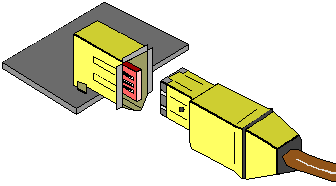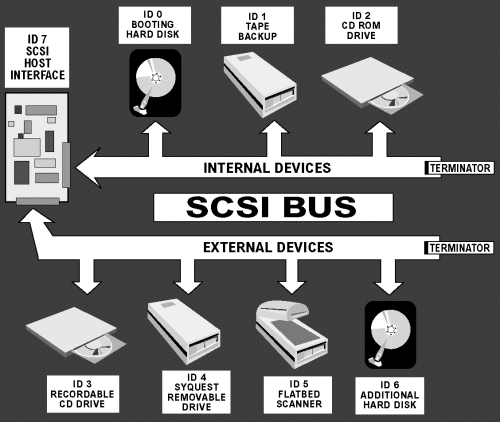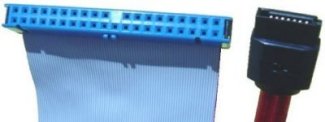In early 2001 the battle between IEEE 1394 and USB advanced another step with the 1394 Trade Association's approval of specifications for a faster version of IEEE 1394, called IEEE 1394b. The new standard is backwards compatible - special … [Read more...]
USB 2.0 Intefaces
While USB was originally designed to replace legacy serial and parallel connections, notwithstanding the claims that they were complementary technologies, there can be little doubt that USB 2.0 specification was designed to compete with FireWire. Compaq, Hewlett-Packard, Intel, Lucent, … [Read more...]
IEEE 1394 Interfaces
Also widely referred to as FireWire, IEEE 1394 was approved by the Institute of Electrical and Electronics Engineers (IEEE) in 1995. Originally conceived by Apple, who currently receives $1 royalty per port, several leading IT companies - … [Read more...]
How It Works: The Idea and Technology Behind USB
In early 2001 the battle between IEEE 1394 and USB advanced another step with the 1394 Trade Association's approval of specifications for a faster version of IEEE 1394, called IEEE 1394b. The new standard is backwards compatible - special … [Read more...]
I/O Interface Standards
Nearly two decades on, many peripheral devices are still connected into the same serial ports and parallel ports that were present on the very first commercial, and with the exception of the Plug-and-Play standards created as part of … [Read more...]
Hard Disks – What is Serial Storage Architecture?
Today's huge databases and data intensive applications demand incredible amounts of storage, and transferring massive blocks of information requires technology that is robust, reliable and scaleable. Serial Storage Architecture ( SSA) is an IBM-developed interface for … [Read more...]
Fibre Channel Interfaces
The committee charged with developing Fibre Channel technology was established within the American National Standards Institute in 1989. Two years later IBM, Hewlett-Packard Co. and Sun Microsystems Inc. joined forces to create the Fibre … [Read more...]
SCSI Interface Evolution
SCSI-1, the original 1986 standard, is now obsolete. It used asynchronous transfer, where the host and the device, blind to the other's maximum potential, slowly exchanged 8 bits at a time, offering a bandwidth of 3 MBps. … [Read more...]
SCSI Explained – With Pictures
As with most specifications in the computer world, the original SCSI (pronounced scuzzy) specification was completed (in 1986) after work had already begun on a better version (SCSI-2). It was developed as a result of attempts by Shugart and NCR … [Read more...]
Serial ATA (SATA) interface guide
In 1999 the Serial ATA (SATA) Working Group was formed, a group comprising companies as illustrious as APT Technologies, Dell, IBM, Intel, Maxtor, Quantum, and Seagate Technologies. Their aim was to form a Serial Advanced Technology Attachment (SATA) storage interface for hard-disk … [Read more...]


